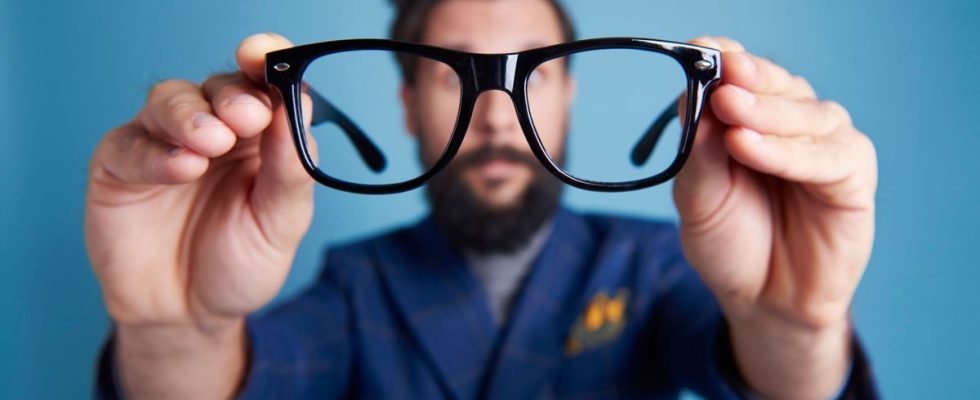Published on
Updated
Reading 3 mins.
While myopia is developing quietly in all developed countries, glasses that slow down this vision disorder in children seem to be proving their worth, a hope for curbing a public health problem that promises to be major.
“Two years ago, Paul’s teacher, then 10 years old, told us that he could no longer see anything on the blackboard.“, tells AFP his mother, Caroline Boudet, editor in Nantes, in the west of France.
An appointment with the ophthalmologist tells them that he is already “quite short-sighted”, although no one in the family suffers from this disorder which causes blurred vision from afar due to too great a distance between the cornea and the retina.
The practitioner then tells them about relatively new lenses that are supposed to slow down the development of her myopia. “After a year, the result was rather positive because his sight seemed to have stabilized“, reports Caroline Boudet.
These so-called “slowing down” myopia lenses, marketed in France for about two years, use integrated technologies which make it possible to correct the visual disorder but also to slow down its development in children with progressive myopia.
A study published in early April in the journal Scientific Reports looked for six years on a cohort of children wearing “Miyosmart” glasses manufactured by the Japanese Hoya. She concludes that there is indeed a slowing down of myopia and that there is no “rebound effect” when the glass is stopped.
Several clinical studies have also demonstrated the effectiveness of “Stellest” lenses from French EssilorLuxottica, highlighting in particular that they have avoided the loss of more than one diopter of myopia on average over three years.
Both optical groups report a slowing of myopia progression by 60% to 67% on average, compared to conventional lenses, when the glasses are worn 12 hours a day.
Other players have invested in the French market, such as the German Zeiss, after a first marketing in Asia.
Additional cost
These new lenses are a hope when according to current projections, half of the world’s population will be myopic in 2050.
Researchers agree on the fact that myopia is favored by the increase in time spent indoors, the lack of exposure to natural light or even excessive solicitation of near vision.
“We tried a lot of things to avoid myopia but this is the first time we have a system that really works, I’m quite amazed“, enthuses Claude Speeg-Schatz, president of the French Society of Ophthalmology.
She explains that she initially corrects a myopic child with normal glasses. “If the myopia increases, I then prescribe these glasses automatically“, she continues. “If it is strong from the start, I recommend them as a first line“.
“It’s a real win for kids.“, adds Jimmy Chammas, an ophthalmologist in Strasbourg, in the east of France. “We see that the myopia of those who wear these glasses worsens half as much as we would have imagined, if at all“.
The only problem: the price of the glasses, around 180 euros, i.e. an additional cost of up to 100 euros compared to conventional corrective glasses, more or less well taken care of according to the mutual insurance companies.
For Jean-Michel Lambert, general manager of “Hoya vision care” in France, it is urgent to set up better reimbursement, some families being harmed today.
Last year the French High Authority for Health (HAS) recognized a service rendered by the Hoya glasses device, deeming it certainly “minor”.
“Each diopter lost considerably increases the risk of future pathologies; if we curb myopia, it will be a lower cost for society“, pleads Mr. Lambert, to defend a more complete care.
When it is strong, beyond -6.00 diopter, myopia increases the risk of various damages (retinal detachment, glaucoma, early cataract, etc.) that can permanently alter sight.

